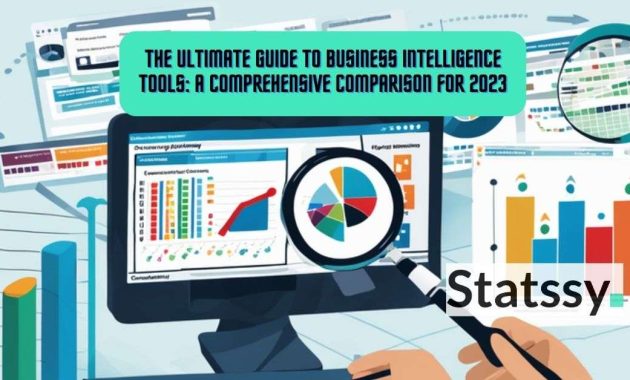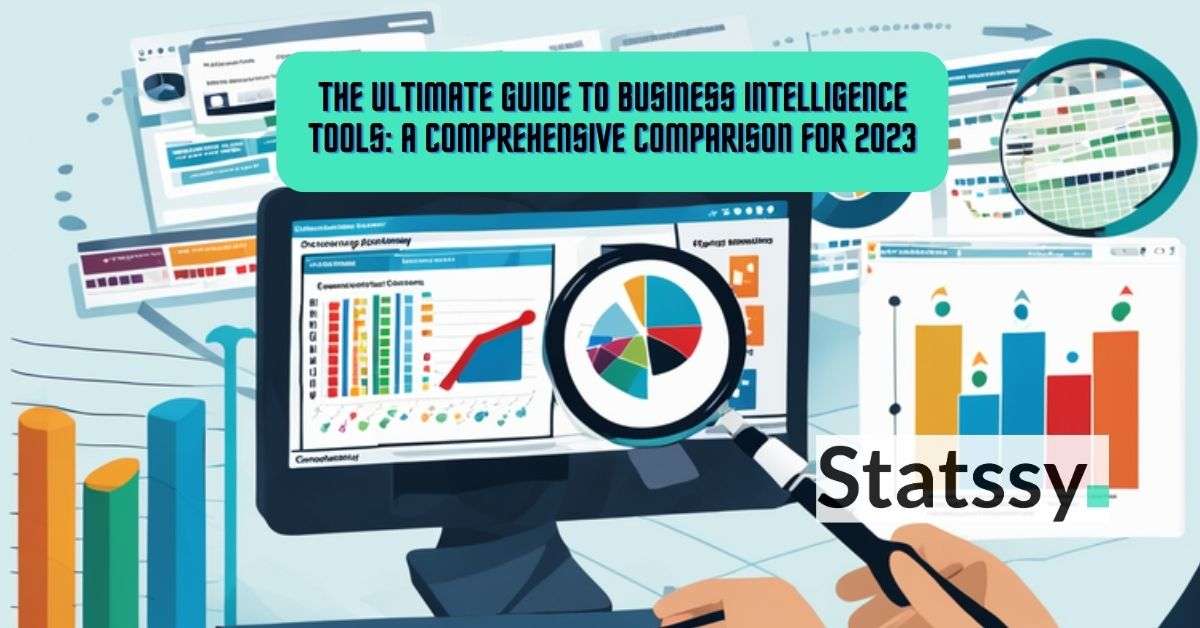
The Ultimate Guide to Business Intelligence Software in 2025: Navigating the Data-Driven Landscape
The year is 2025. Businesses are drowning in data, yet thirsting for insights. The ability to extract actionable intelligence from this deluge is no longer a luxury; it’s a necessity. This is where Business Intelligence (BI) software steps in, becoming the cornerstone of strategic decision-making. This comprehensive guide provides an in-depth look at the Business Intelligence software landscape, specifically tailored for 2025. We’ll explore its evolution, key features, leading vendors, and future trends to help you make informed decisions about your data strategy.
The Evolution of Business Intelligence
Business Intelligence software has come a long way. It began as simple reporting tools, evolving into complex platforms. These platforms now offer advanced analytics and predictive modeling capabilities. The shift from static reports to dynamic dashboards has transformed the way businesses operate.
Early BI systems focused on historical data analysis. They generated reports about what happened in the past. Modern Business Intelligence software focuses on the present and the future. It uses real-time data streams and predictive analytics. This allows businesses to anticipate market changes and make proactive decisions.
Cloud computing and the rise of big data have fueled this transformation. Cloud-based Business Intelligence software offers scalability and accessibility. Big data analytics provide the raw material for deeper insights. The convergence of these technologies has created a powerful ecosystem for data-driven decision-making.
Key Features of Business Intelligence Software in 2025
Business Intelligence software in 2025 is characterized by its sophistication. It boasts a wide array of features designed to meet the evolving needs of businesses. These are some of the core features to expect:
- Data Integration and Preparation: Seamlessly connects to various data sources. This includes databases, cloud platforms, and IoT devices. It offers robust data cleaning and transformation capabilities.
- Data Visualization and Dashboards: Creates interactive dashboards and visualizations. These tools are used to communicate complex data in an easily understandable format. Customization options cater to specific user needs.
- Advanced Analytics and Predictive Modeling: Employs advanced analytical techniques. These techniques include machine learning, statistical analysis, and forecasting. It facilitates predictive insights and future trend identification.
- Real-time Reporting and Monitoring: Provides real-time data updates. Enables continuous monitoring of key performance indicators (KPIs). Supports immediate response to changing conditions.
- Mobile BI: Offers mobile access to dashboards and reports. This ensures data accessibility for decision-makers on the go. Mobile-optimized interfaces enhance the user experience.
- Collaboration and Sharing: Facilitates collaboration among team members. Allows for the sharing of insights and reports. Integrated communication tools streamline decision-making processes.
- Artificial Intelligence (AI) Integration: Leverages AI-powered features. This includes automated insights, natural language processing (NLP), and intelligent recommendations. AI enhances the analytical capabilities of Business Intelligence software.
- Embedded BI: Integrates BI functionalities into existing applications. This enhances user experience and data accessibility. It provides seamless access to insights within workflows.
Leading Business Intelligence Software Vendors in 2025
The Business Intelligence software market is competitive. Several vendors have established themselves as leaders. These vendors offer a range of solutions to meet diverse business needs:
- Microsoft Power BI: Remains a dominant player. Power BI offers a comprehensive suite of BI tools. It is known for its ease of use and integration with other Microsoft products. It is a popular choice for organizations of all sizes.
- Tableau (Salesforce): Continues to be a leader in data visualization. Tableau is known for its user-friendly interface and powerful analytical capabilities. It caters to data professionals and business users alike.
- Qlik: Provides data discovery and self-service BI solutions. Qlik offers a unique associative data model. It allows users to explore data and uncover hidden insights.
- ThoughtSpot: Offers a search-driven analytics platform. ThoughtSpot allows users to ask questions in plain language. It provides instant answers and insights.
- Sisense: Focuses on embedded analytics and data-driven applications. Sisense offers a flexible platform for building custom analytics solutions. It caters to businesses that need to integrate BI into their products.
- Looker (Google Cloud): Provides a data platform for data-driven decision making. Looker offers a flexible data modeling layer. It allows organizations to build a single source of truth for their data.
The best choice depends on your specific needs. Consider factors like data volume, user skills, and budget. Evaluate each vendor’s capabilities and pricing. It’s important to align your selection with your business goals.
Choosing the Right Business Intelligence Software
Selecting the right Business Intelligence software is crucial for success. Consider these factors during your evaluation:
- Data Sources: Ensure compatibility with your existing data sources.
- User Needs: Assess the skill levels of your users.
- Scalability: Choose a platform that can grow with your business.
- Integration: Consider how well the software integrates with other tools.
- Security: Prioritize data security and compliance.
- Cost: Evaluate pricing models and total cost of ownership.
- Support: Check the vendor’s support and training resources.
Conducting a thorough evaluation is key. Consider a proof of concept (POC) or pilot project. This allows you to test the software. It also helps to ensure it meets your requirements. [See also: How to Conduct a Successful BI Software Pilot Project]
Future Trends in Business Intelligence
The Business Intelligence software landscape is constantly evolving. Several trends will shape its future:
- AI-Powered BI: AI will become more integrated. This will automate insights and enhance analytics.
- Data Democratization: More users will access and analyze data. This will drive self-service BI solutions.
- Edge Computing: BI will move closer to the data source. This will improve real-time analysis.
- Data Governance: Data governance will become more important. This will ensure data quality and compliance.
- Augmented Analytics: Augmented analytics will become more prevalent. This will provide automated insights and recommendations.
- Focus on Data Literacy: Organizations will prioritize data literacy training. This will empower employees to use data effectively.
Staying ahead of these trends is critical. It ensures your Business Intelligence software strategy remains effective. It allows you to leverage the latest advancements for better outcomes.
Implementing Business Intelligence Software: Best Practices
Successful implementation of Business Intelligence software requires a strategic approach:
- Define Objectives: Clearly define your business goals. Identify the key performance indicators (KPIs).
- Data Strategy: Develop a comprehensive data strategy. This includes data collection, storage, and governance.
- User Training: Provide adequate training. This will empower your users to use the software effectively.
- Change Management: Manage the change within your organization. Communicate the benefits of the new system.
- Iterative Approach: Implement the software in phases. Get feedback and make adjustments as needed.
- Data Quality: Ensure data quality and accuracy. This is essential for reliable insights.
By following these best practices, you can maximize the value of your Business Intelligence software investment. This will lead to better decision-making and improved business outcomes.
The Impact of Business Intelligence Software on Business Performance
Business Intelligence software directly impacts business performance. It provides several benefits:
- Improved Decision-Making: Data-driven insights lead to better decisions. This results in more effective strategies.
- Increased Efficiency: Automating data analysis saves time. This allows employees to focus on strategic tasks.
- Enhanced Customer Experience: Understanding customer behavior improves services. This fosters customer loyalty and satisfaction.
- Competitive Advantage: Gaining insights faster than competitors provides an edge. This allows proactive market adaptation.
- Cost Reduction: Identifying inefficiencies reduces operational costs. This improves profitability.
- Risk Management: Early detection of potential problems reduces risks. This helps to protect the business.
Implementing Business Intelligence software can transform business operations. It enables data-driven strategies. These strategies drive growth and improve overall performance. [See also: How Business Intelligence Software Drives Revenue Growth]
Conclusion: Embracing the Future of Business Intelligence
Business Intelligence software is indispensable in 2025. It is a powerful tool for navigating the data-driven landscape. By understanding its evolution, features, and trends, you can make informed decisions. Selecting the right Business Intelligence software is a strategic imperative. This will empower your business to thrive in the digital age.
The future of Business Intelligence software is bright. It will continue to evolve. It will offer more advanced capabilities. This will drive innovation and business success. Embrace the power of data. Leverage Business Intelligence software to achieve your goals. The ability to harness data is the key to competitive advantage.

